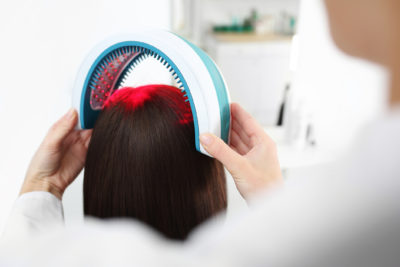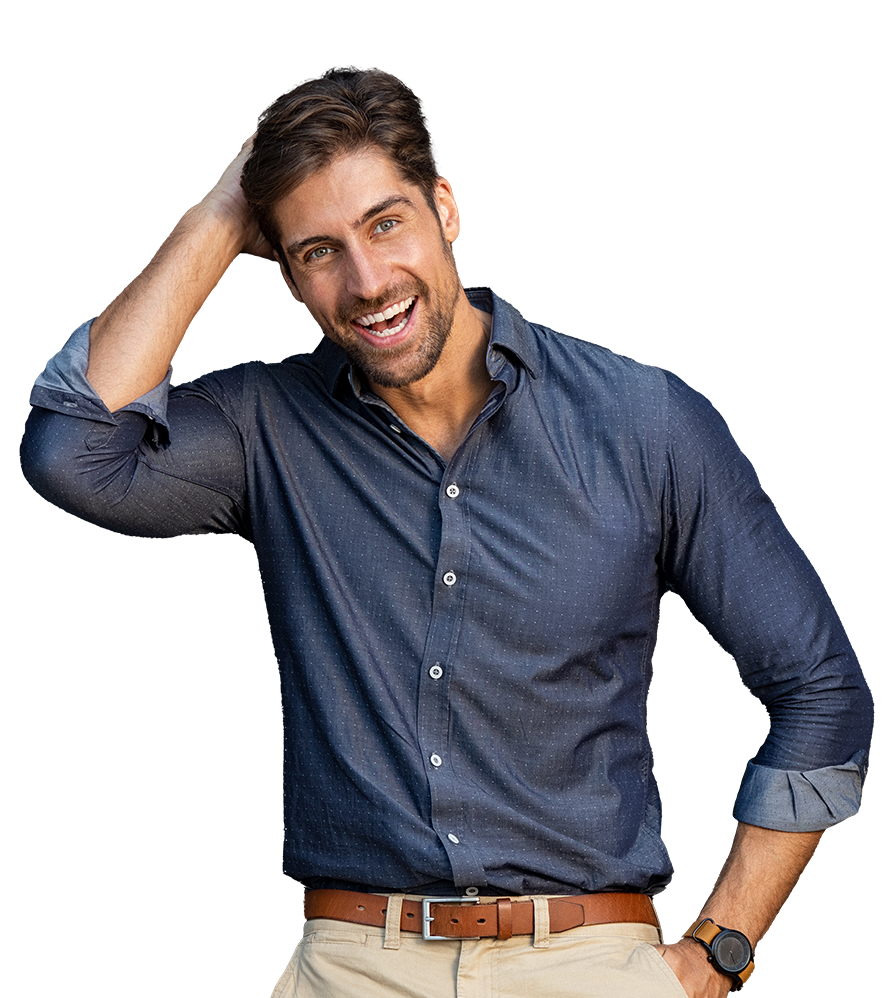If you’ve lost enough hair to consider a transplant, perhaps you’ve come across this acronym, which stands for low-light laser therapy. Maybe you’ve even heard good things. The question is, are you listening to pure hype, or do these products really deliver on their promise? We’re here to help you sort through the clutter and figure out if LLLT is right for you.
across this acronym, which stands for low-light laser therapy. Maybe you’ve even heard good things. The question is, are you listening to pure hype, or do these products really deliver on their promise? We’re here to help you sort through the clutter and figure out if LLLT is right for you.
What is low-level laser therapy?
LLLT is a non-pharmaceutical, non-surgical hair restoration treatment that uses laser light to stimulate cell growth, supercharge hair follicles, and ultimately combat the most common form of hair loss. And that is male and female-pattern baldness, or androgenetic alopecia. LLLT also has been successful in treating hair loss due to chemotherapy, pregnancy, or menopause. What’s more, LLLT can be used to complement other hair loss treatments and for other areas of your body, including beard and, back, and legs.
How does it work?
Low laser light is absorbed by hair follicle molecules, helping to stimulate follicles into the growth stage. When the light penetrates the scalp, it stimulates the stem cells in charge of follicle regeneration. It also increases blood flow to the targeted area of the scalp, boosting delivery of essential nutrients and oxygen. This causes the hair to grow not only in length, but diameter – resulting in thicker, fuller hair.
What can I expect?
LLLT has been shown to help hair grow stronger, thicker, and healthier, and even slow down or put a halt to hair loss. However, it likely won’t help individuals who have been experiencing baldness for several years and it won’t cause hair to grow on areas of the scalp when no hair exists. It is only successful in stimulating active hair follicles, not those already dead gone. As such, one should start LLLT in the first stages of hair loss to gain full benefit from this treatment method. If your hair loss is more advanced, results may be limited. However, LLLT may still be able to help slow and even stop further hair loss.
Positive results typically appear within two months from the time you start treatment – from there, you can expect steady improvement over time. However, LLLT only works with continued treatment; if treatment is interrupted, hair loss will resume and all or most gains will be lost.
The more options you have to prevent or reverse hair loss, the more reasons you have to meet with our experienced team of hair transplant specialists. Contact DiStefano Hair Restoration Center today to schedule a free consultation to explore those possibilities most likely to succeed.


